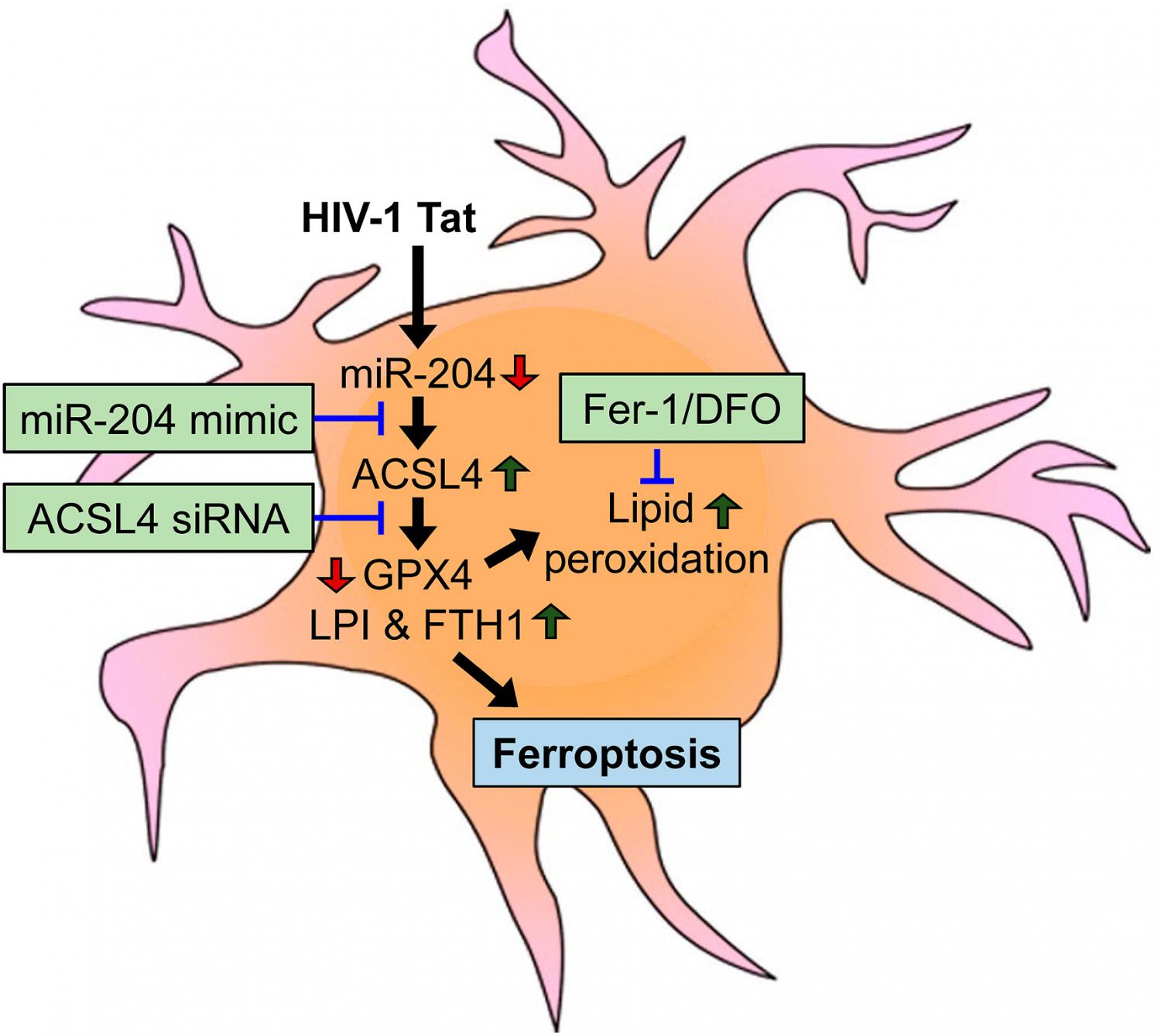
This study was focused on exploring the role of the HIV-1 Tat protein in mediating microglial ferroptosis. Exposure of mouse primary microglial cells (mPMs) to HIV-1 Tat protein resulted in induction of ferroptosis, which was characterized by increased expression of Acyl-CoA synthetase long-chain family member 4 (ACSL4), in turn, leading to increased generation of oxidized phosphatidylethanolamine, elevated levels of lipid peroxidation, upregulated labile iron pool (LIP) and ferritin heavy chain-1 (FTH1), decreased glutathione peroxidase-4 and mitochondrial outer membrane rupture. Also, inhibition of ferroptosis by ferrostatin-1 (Fer-1) or deferoxamine (DFO) treatment suppressed ferroptosis-related changes in mPMs. Similarly, the knockdown of ACSL4 by gene silencing also inhibited ferroptosis induced by HIV-1 Tat. Furthermore, increased lipid peroxidation resulted in increased release of proinflammatory cytokines, such as TNFα, IL6, and IL1β and microglial activation. Pretreatment of mPMs with Fer-1 or DFO further blocked HIV-1 Tat-mediated microglial activation in vitro and reduced the expression and release of proinflammatory cytokines. We identified miR-204 as an upstream modulator of ACSL4, which was downregulated in mPMs exposed to HIV-1 Tat. Transient transfection of mPMs with miR-204 mimics reduced the expression of ACSL4 while inhibiting HIV-1 Tat-mediated ferroptosis and the release of proinflammatory cytokines. These in vitro findings were further validated in HIV-1 transgenic rats as well as HIV + ve human brain samples. Overall, this study underscores a novel mechanism(s) underlying HIV-1 Tat-mediated ferroptosis and microglial activation involving miR-204–ACSL4 signaling.
